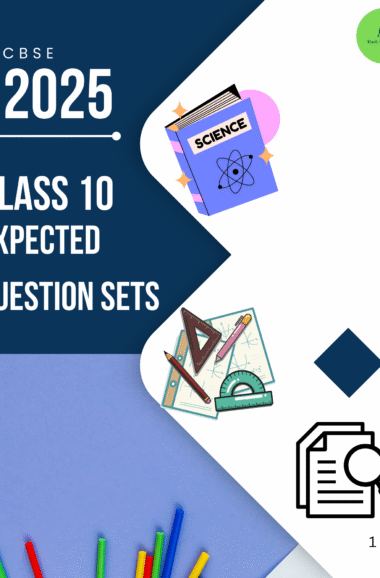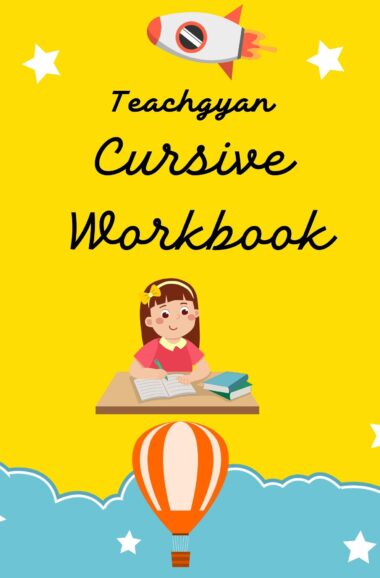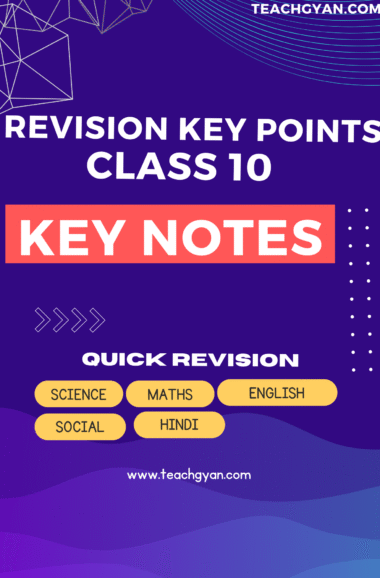Solutions[expand title=”Read More➔” swaptitle=”🠔Read Less”]
Class: 12 Chemistry | Chapter: Solutions
Objectives:
- Cognitive: Understand the concept of solutions and their properties.
- Affective: Develop an appreciation for the importance of solutions in daily life.
- Psychomotor: Perform activities to demonstrate the principles of solubility.
Materials Needed:
- Whiteboard and markers
- Projector for displaying pictures and videos
- Solids of different types (sugar, salt, chalk)
- Various liquids (water, alcohol, oil)
- Beakers, test tubes, and stirring rods
- Pictures and diagrams of solution processes
5E Lesson Plan:
1. Engage (10 mins):
- Begin with a brief discussion on what students understand about solutions.
- Show a picture of a common solution (e.g., salt dissolving in water) and ask students to describe what is happening.
- Introduce the concept of solubility and its importance in daily life.
2. Explore (20 mins):
- Divide students into small groups.
- Provide each group with different solutes and solvents.
- Instruct them to mix the substances and observe and record the changes.
- Encourage discussion on what factors affect the solubility of substances.
- Circulate to each group to facilitate and guide the activities.
3. Explain (15 mins):
- Bring the class together and discuss the results of the activities.
- Introduce key terms and principles related to solutions.
- Use the whiteboard for visual aids and diagrams to explain concepts like solubility, saturation, and factors affecting solubility.
4. Elaborate (25 mins):
- Conduct a demonstration of preparing a saturated solution and discuss the concept.
- Show pictures and diagrams explaining different types of solutions (e.g., solid in liquid, liquid in liquid).
- Discuss real-life examples where solutions play a crucial role (e.g., blood as a solution in the human body).
5. Evaluate (10 mins):
- Assign a small project where students need to research and present an everyday example of a solution.
- Ask students to write a short reflection on what they learned during the class.
- Conclude with a brief quiz to assess the understanding of key concepts.
Homework:
- Assign exercises from the textbook for practice.
- Ask students to bring examples of solutions they encounter in daily life.
Assessment:
- Informal assessment during group activities.
- Evaluation of the project and reflections.
- Quiz results.
Note:
Adapt the time allocated based on the pace of the class. Encourage active participation and discussion throughout the lesson.[/expand]
Electrochemistry [expand title=”Read More➔” swaptitle=”🠔Read Less”]
Class: 12th CBSE – Chemistry
Chapter: Electrochemistry
Objective:
- Understand the principles of electrochemistry.
- Relate electrochemical processes to real-world applications.
- Develop problem-solving skills related to electrochemical reactions.
- Enhance critical thinking through hands-on activities.
Engage:
Time: 15 minutes
Activity: Begin with a simple activity – “Electrochemical Cells in Everyday Life.”
- Students work in pairs to identify electrochemical cells in common household items (batteries, electrolysis devices, etc.).
- Discuss findings and elicit prior knowledge about electrochemistry.
Discussion: Display a picture of a Galvanic cell and ask students to identify its components.
- Discuss their observations and introduce key terms: anode, cathode, salt bridge, and electron flow.
Explore:
Time: 20 minutes
Activity: “Construct Your Cell.”
- Provide materials for students to construct a simple Galvanic cell.
- Observe and explain the electron flow, oxidation, and reduction.
Picture-based Learning: Display diagrams of various electrochemical cells (Daniell cell, fuel cell, etc.).
- Discuss differences and similarities.
- Highlight the importance of different cells in practical applications.
Explain:
Time: 25 minutes
Lecture: Provide a concise lecture on standard electrode potential.
- Use visual aids, including charts and diagrams.
- Explain the significance of standard hydrogen electrode (SHE).
Class Discussion: Discuss the Nernst equation and its applications.
- Solve a few problems together to reinforce the concept.
Elaborate:
Time: 30 minutes
Group Activity: “Electrochemical Series Inquiry.”
- Divide students into groups and provide them with the electrochemical series.
- Ask each group to research and present applications of elements in the series.
Case Study: Present a real-world case study on the application of electrochemistry in industries (e.g., electroplating).
- Discuss the chemistry behind the process and its significance.
Evaluate:
Time: 20 minutes
Quiz: Administer a short quiz covering the key concepts learned during the lesson.
- Include questions on standard electrode potential, Nernst equation, and practical applications.
Peer Evaluation: Students share their group activities and evaluate each other’s presentations.
- Encourage constructive feedback.
Homework:
Assign a problem-solving task related to calculating cell potentials using the Nernst equation.
Conclusion:
Recap the key concepts and their applications. Emphasize the relevance of electrochemistry in everyday life and various industries.
Note: Adjust time durations based on the class dynamics and the specific needs of your students.[/expand]
Chemical Kinetics[expand title=”Read More➔” swaptitle=”🠔Read Less”]
Chapter: Chemical Kinetics
Objective:
- Understand the concept of chemical kinetics and factors influencing reaction rates.
- Relate the concentration of reactants to the rate of reaction.
- Apply the rate law equation to calculate reaction rates.
- Investigate the effect of temperature on reaction rates.
Materials:
- Whiteboard and markers
- Projector and screen
- Reaction vessels and chemicals for experiments
- Temperature measuring devices
- Stopwatch
Duration: 2 hours
Engage (15 minutes):
Begin the class by showing a visually engaging image or animation of a chemical reaction taking place. Discuss the importance of understanding reaction rates in practical applications. Ask questions to stimulate curiosity, like “Why do some reactions happen quickly, while others take longer?”
Learning Outcome: Students will be curious and motivated to learn about chemical kinetics.
Explore (30 minutes):
Activity 1: Reaction Rates and Concentration (15 minutes)
- Provide students with different concentrations of reactants.
- In pairs, students will measure the time it takes for the reaction to occur.
- Plot a graph of concentration vs. time.
Activity 2: Rate Law Equation (15 minutes)
- Introduce the rate law equation and explain its components.
- In groups, students will be given different reactions to determine the rate law and order of reaction.
Learning Outcome: Students will understand the relationship between concentration and reaction rate, and be able to apply the rate law equation.
Explain (30 minutes):
Use the whiteboard to explain the concepts of reaction rates, order of reaction, and the rate law equation. Clarify doubts and discuss the results of the activities. Provide real-life examples to illustrate the importance of these concepts.
Learning Outcome: Students will have a theoretical understanding of chemical kinetics.
Elaborate (30 minutes):
Picture-based Learning (15 minutes)
- Show diagrams and graphs representing different types of reactions and their rates.
- Discuss how changing conditions affect reaction rates.
Temperature and Rate of Reaction (15 minutes)
- Discuss the effect of temperature on reaction rates.
- Conduct an experiment varying the temperature and measuring the rate of reaction.
Learning Outcome: Students will understand the graphical representation of reaction rates and the influence of temperature.
Evaluate (15 minutes):
Conduct a brief quiz or discussion to assess students’ understanding of the concepts covered in the lesson. Use open-ended questions to encourage critical thinking.
Learning Outcome: Students will be able to apply their knowledge to solve problems and analyze experimental results.
Homework:
Assign problems related to the rate law equation, reaction rates, and temperature dependence for homework.
This lesson plan follows the 5E model (Engage, Explore, Explain, Elaborate, Evaluate) and incorporates both activity-based and picture-based learning methods.[/expand]
d -and f -Block Elements[expand title=”Read More➔” swaptitle=”🠔Read Less”]
Class: XII
Subject: Chemistry
Objective:
- Students will be able to understand the properties and characteristics of d- and f-block elements.
- Students will learn the electronic configuration and general trends of these elements.
- Students will be able to correlate the position of these elements in the periodic table with their properties.
Engage (Duration: 10 minutes)
Introduction:
- Begin with a brief recap of the periodic table and its blocks.
- Pose questions like, “Why are d- and f-block elements significant?” and “What role do they play in the properties of elements?”
Picture Analysis:
- Display pictures of representative d- and f-block elements.
- Ask students to identify common features and differences based on the pictures.
- Encourage a short discussion on the significance of these elements.
Explore (Duration: 15 minutes)
Group Activity: Trends in d-Block Elements
- Provide each group with a set of d-block elements.
- Ask them to observe and note down the physical and chemical properties.
- Students should discuss and present their findings to the class.
Activity: Electronic Configuration
- Provide a worksheet with incomplete electronic configurations of d-block elements.
- Students complete the configurations and discuss the patterns observed.
Explain (Duration: 20 minutes)
Lecture: Overview of d- and f-Block Elements
- Provide a structured lecture explaining the characteristics, electronic configurations, and general trends.
- Use visual aids and diagrams to enhance understanding.
Interactive Session: Periodic Trends
- Discuss the periodic trends of d- and f-block elements.
- Explain why these elements exhibit unique properties compared to s- and p-block elements.
Elaborate (Duration: 20 minutes)
Project Work: Applications of Transition Metals
- Assign a project where students research and present real-world applications of transition metals.
- Encourage creativity in presenting the information.
Case Study: Lanthanides and Actinides
- Provide a case study on the applications and significance of lanthanides and actinides.
- Discuss their role in nuclear reactions and industrial applications.
Evaluate (Duration: 15 minutes)
Quiz: Understanding d- and f-Block Elements
- Conduct a short quiz to assess the understanding of the topic.
- Include multiple-choice questions, short answers, and diagram-based questions.
Discussion: Concept Clarification
- Address any questions or concerns raised during the quiz.
- Encourage students to discuss and clarify concepts with peers.
Homework/Assignment:
Assign a research project on the discovery and historical significance of one d-block and one f-block element.
Note to the Teacher:
- Ensure that activities are well-structured and promote active student participation.
- Use visual aids, charts, and diagrams to make abstract concepts more tangible.
- Encourage discussions and questions to foster a deeper understanding of the topic.[/expand]
Coordination Compounds [expand title=”Read More➔” swaptitle=”🠔Read Less”]
Class: 12
Chapter: Coordination Compounds
Duration: 1 hour
1. Engage (10 minutes)
Objective: Introduce students to the concept of coordination compounds and create interest.
Activity 1: Name That Compound
- Show pictures of common coordination compounds on the board.
- Ask students to identify the compounds and try to name them.
- Discuss briefly what they know about coordination compounds.
Discussion: Why Study Coordination Compounds?
- Engage students in a short discussion about the importance and applications of coordination compounds in daily life and industry.
2. Explore (15 minutes)
Objective: Allow students to explore the coordination number and different types of ligands.
Activity 2: Coordination Number Exploration
- Provide molecular models or images representing different coordination numbers.
- Ask students to count the number of ligands around the central metal atom for each model.
- Discuss the concept of coordination number and its significance.
Activity 3: Types of Ligands
- Display pictures of various ligands.
- Ask students to identify the types of ligands and their structures.
- Discuss the role of ligands in coordination compounds.
3. Explain (20 minutes)
Objective: Provide a clear explanation of coordination compounds and their nomenclature.
Lecture: Basics of Coordination Compounds
- Explain the definition of coordination compounds.
- Introduce terms like coordination entity, ligands, and central metal atom.
- Discuss the nomenclature of coordination compounds.
Picture-Based Learning: Structural Isomerism
- Show pictures of structural isomers and discuss how they differ in structure.
- Explain the concept of structural isomerism in coordination compounds.
4. Elaborate (10 minutes)
Objective: Allow students to apply their knowledge through an activity.
- Activity 4: Nomenclature Practice
- Provide examples of coordination compounds.
- Ask students to practice naming these compounds.
- Provide feedback and clarification as needed.
5. Evaluate (5 minutes)
Objective: Assess understanding through a brief quiz.
- Quiz: Short Questions
- Distribute a short quiz covering the day’s concepts.
- Include questions on coordination number, ligands, and nomenclature.
- Collect and review the quizzes for understanding.
Homework Assignment
Ask students to research and bring examples of coordination compounds used in medicine, industry, or daily life for the next class.
This lesson plan integrates various activities and visuals to engage students and enhance their understanding of coordination compounds. Adjust the time allocation based on the class dynamics and pace of understanding.[/expand]
Haloalkanes and Haloarenes[expand title=”Read More➔” swaptitle=”🠔Read Less”]
Subject: Chemistry
Objectives:
Knowledge Objective:
- Students will understand the structure and nomenclature of haloalkanes and haloarenes.
Skill Objective:
- Students will be able to differentiate between various types of halogenated compounds.
- Students will learn the methods of preparation and chemical reactions of haloalkanes and haloarenes.
Application Objective:
- Students will apply the knowledge to predict the products of reactions involving haloalkanes and haloarenes.
Materials:
Activity Materials:
- Haloalkane and haloarene molecular models.
- Laboratory safety equipment.
Picture-based Materials:
- Visual aids, such as diagrams and charts illustrating the structures and reactions of haloalkanes and haloarenes.
5E Instructional Model:
1. Engage (15 minutes):
Activity: Molecular Modeling
- Distribute molecular model kits.
- Ask students to build models of different haloalkanes and haloarenes.
- Encourage discussion on the spatial arrangement and bond angles.
Picture-based: Concept Introduction
- Show visual representations of haloalkanes and haloarenes.
- Discuss the importance of these compounds and their role in organic chemistry.
2. Explore (20 minutes):
Activity: Experimental Exploration
- Perform simple synthesis of a haloalkane in the laboratory.
- Students observe and record the changes.
Picture-based: Reaction Mechanisms
- Display reaction mechanisms on the board.
- Discuss the significance of each step.
3. Explain (20 minutes):
Activity: Class Discussion
- Discuss the experimental results and relate them to theoretical concepts.
- Clarify doubts and answer questions.
Picture-based: Detailed Structures
- Present detailed structures and nomenclature rules.
- Emphasize key points through visuals.
4. Elaborate (25 minutes):
Activity: Group Work
- Assign different haloalkanes and haloarenes to groups.
- Groups prepare a short presentation on the preparation methods and reactions of their assigned compound.
Picture-based: Case Studies
- Share case studies involving practical applications of haloalkanes and haloarenes.
- Discuss their importance in pharmaceuticals and industry.
5. Evaluate (20 minutes):
Activity: Quiz and Discussion
- Conduct a short quiz to assess understanding.
- Discuss answers and clarify misconceptions.
Picture-based: Concept Mapping
- Provide a concept map template.
- Ask students to create a concept map summarizing the key points from the lesson.
Homework/Assignment:
- Research and prepare a short report on recent advancements or discoveries related to haloalkanes and haloarenes.
Assessment:
- Formative assessment through participation in activities and discussions.
- Summative assessment through the quiz and the concept map.
This lesson plan integrates hands-on activities, visual aids, and collaborative learning to cater to various learning styles and enhance the overall understanding of the topic.[/expand]
Alcohols, Phenols and Ethers[expand title=”Read More➔” swaptitle=”🠔Read Less”]
Class: 12 CBSE Chemistry
Chapter: Alcohols, Phenols, and Ethers
Objectives:
- Understand the structure and properties of alcohols, phenols, and ethers.
- Learn the nomenclature and isomerism of these compounds.
- Explore the synthesis methods for alcohols, phenols, and ethers.
- Analyze the chemical reactions involving these functional groups.
- Relate the uses of alcohols, phenols, and ethers in daily life.
1. Engage (15 minutes):
Activity 1: Picture-Based Introduction
- Display visual representations of alcohols, phenols, and ethers on the board or through a presentation.
- Ask students to discuss what they observe about the structures and any initial thoughts about the differences between these functional groups.
Activity 2: Class Discussion
- Engage students in a discussion about the importance of these compounds in daily life. Discuss common examples and their applications.
2. Explore (20 minutes):
Activity 3: Group Activity – Nomenclature
- Divide the class into small groups.
- Provide each group with a set of molecules and ask them to correctly name each compound.
- Encourage discussion and reasoning behind the chosen names.
Activity 4: Lab Simulation – Synthesis of Alcohols
- Use a virtual lab simulation to demonstrate the synthesis of alcohols.
- Discuss the reaction mechanisms and conditions involved.
3. Explain (20 minutes):
Activity 5: Interactive Lecture
- Explain the key concepts of the chapter, including the structural features, nomenclature, and isomerism.
- Use visuals and diagrams to aid understanding.
- Clarify doubts and encourage questions.
Activity 6: Concept Mapping
- Provide a template for concept mapping. Ask students to create a concept map summarizing the key points of the chapter.
4. Elaborate (25 minutes):
Activity 7: Case Study – Industrial Applications
- Present a case study on the industrial applications of alcohols, phenols, and ethers.
- Discuss how these compounds are used in various industries and their significance.
Activity 8: Project Work
- Assign a project where students research and present the medicinal uses of certain alcohols, phenols, or ethers.
- Emphasize the importance of research skills and critical thinking.
5. Evaluate (15 minutes):
Activity 9: Quiz
- Conduct a short quiz to assess understanding.
- Include multiple-choice questions, short-answer questions, and application-based questions.
Activity 10: Class Discussion and Reflection
- Discuss the quiz results and address any misconceptions.
- Ask students to reflect on what they found most challenging or interesting during the lesson.
Homework:
Assign a homework assignment where students have to research and write a short essay on the environmental impact of the synthesis and use of alcohols, phenols, and ethers.
Note:
- Adjust the time allocated for each activity based on the pace of the class.
- Encourage student participation and questions throughout the lesson.
- Utilize technology for virtual labs and interactive presentations.
This lesson plan aims to provide a comprehensive understanding of the chapter through a mix of activities, discussions, and assessments.[/expand]
Aldehydes, Ketones and Carboxylic Acids[expand title=”Read More➔” swaptitle=”🠔Read Less”]
Class: 12 CBSE Chemistry
Objective:
- Cognitive: Understand the structure, nomenclature, and reactions of aldehydes, ketones, and carboxylic acids.
- Psychomotor: Conduct chemical tests to differentiate between aldehydes and ketones.
- Affective: Develop an appreciation for the importance of these compounds in daily life and industry.
Materials Needed:
- Molecular models
- Whiteboard and markers
- Pictures and diagrams illustrating the structures of aldehydes, ketones, and carboxylic acids
- Chemicals for practical demonstrations (Tollens’ reagent, Fehling’s solution, etc.)
- Safety goggles
- Lab equipment for practical activities
Time: 1 Hour 30 Minutes
5E Model:
Engage (15 minutes):
- Introduction: Begin with a brief recap of previous classes’ content related to organic chemistry.
- Real-World Connection: Show pictures of common substances like formaldehyde, acetone, and acetic acid, and discuss their applications in daily life.
Explore (20 minutes):
- Molecular Models Activity: Use molecular models to illustrate the structural differences between aldehydes, ketones, and carboxylic acids. Allow students to manipulate the models for hands-on learning.
- Interactive Diagrams: Display diagrams on the whiteboard and ask students to identify functional groups and bond structures.
Explain (25 minutes):
- Theory Presentation: Provide a detailed explanation of the nomenclature, structure, and properties of aldehydes, ketones, and carboxylic acids.
- Use of Visual Aids: Integrate pictures and diagrams to enhance understanding. Emphasize key reactions and mechanisms.
Elaborate (30 minutes):
- Chemical Tests Demonstration: Conduct experiments using Tollens’ reagent, Fehling’s solution, and other relevant tests to differentiate between aldehydes and ketones.
- Problem-Solving: Present scenarios where students apply their knowledge to identify unknown compounds.
Evaluate (20 minutes):
- Class Discussion: Engage in a discussion about the experiments, reinforcing key concepts.
- Assignment: Provide problems for homework to assess understanding.
- Assessment Criteria: Assess based on participation in activities, understanding demonstrated in the discussion, and completion of assignments.
Homework:
- Research and prepare a short presentation on the industrial uses of aldehydes, ketones, and carboxylic acids.
Conclusion:
Conclude the lesson by summarizing key points, linking them to real-world applications, and previewing the upcoming lesson on reactions of these compounds.
Note: Ensure that safety precautions are strictly followed during practical activities, and students wear appropriate protective gear. Adjust the time allocation based on the pace of the class and the complexity of discussions.[/expand]
Amines[expand title=”Read More➔” swaptitle=”🠔Read Less”]
Subject: Chemistry
Class: 12
Chapter: Amines
Objectives:
- Knowledge: Students will understand the structure and nomenclature of amines.
- Comprehension: Students will be able to explain the classification of amines.
- Application: Students will apply their knowledge to predict properties and reactions of different types of amines.
- Analysis: Students will analyze the importance of amines in everyday life and industries.
- Evaluation: Students will evaluate the environmental and health implications of certain amines.
5E Model:
1. Engage (15 minutes):
- Begin with a short discussion on the importance of amines in daily life.
- Show pictures of commonly encountered amines in household products.
- Discuss any previous knowledge students might have about amines.
2. Explore (20 minutes):
- Conduct a simple hands-on activity where students work in pairs to classify different amines based on their structures.
- Provide a set of amine compounds and structural formulas for classification.
- Encourage discussions among students about the similarities and differences in the structures.
3. Explain (20 minutes):
- Present a brief lecture on amine nomenclature and classification.
- Use visual aids such as diagrams and charts to illustrate the key concepts.
- Discuss the properties and general reactions of different types of amines.
4. Elaborate (25 minutes):
- Assign a group activity where students research and present a real-world application of a specific type of amine (e.g., pharmaceuticals, dyes, polymers).
- Each group should create a poster or a short presentation highlighting the role of amines in their chosen application.
- Encourage peer-to-peer discussions and questions.
5. Evaluate (20 minutes):
- Conduct a short quiz to assess the students’ understanding of amine structures, nomenclature, and reactions.
- Ask each group to briefly present their findings from the elaborate activity, emphasizing the importance of amines in various applications.
- Conclude with a class discussion on the environmental and health implications of certain amines, promoting critical thinking.
Homework Assignment:
Assign a homework task that involves researching and reporting on a recent scientific discovery or development related to amines.
Assessment:
Assessment will be based on class participation, the quiz, and the group presentation.
This lesson plan aims to engage students, involve them in hands-on activities, and encourage collaborative learning, ensuring a comprehensive understanding of the topic “Amines” in Chemistry.[/expand]
Biomolecules[expand title=”Read More➔” swaptitle=”🠔Read Less”]
Chapter: Biomolecules
Duration: 60 minutes
Objectives:
- Knowledge: Understand the structure and functions of biomolecules.
- Application: Relate the concepts of biomolecules to real-life examples.
- Analysis: Analyze the importance of biomolecules in living organisms.
- Evaluation: Assess the significance of different biomolecules in biological processes.
- Creation: Develop an awareness of the diversity of biomolecules and their roles.
Materials:
- Whiteboard and markers
- Projector for multimedia presentations
- Models of biomolecules (optional)
- Worksheets and handouts
- Images and diagrams of biomolecules
5E Lesson Plan:
1. Engage (10 minutes):
- Introduction:
- Start with a brief discussion on the importance of biomolecules in living organisms.
- Show images of common biomolecules (proteins, lipids, nucleic acids, and carbohydrates) to grab students’ attention.
- Ask open-ended questions to provoke thoughts: “Why are biomolecules essential for life?”
2. Explore (15 minutes):
Activity 1 – Building Biomolecules:
- Provide molecular model kits or materials for students to build simple models of biomolecules.
- Facilitate group discussions on the structure of each biomolecule.
- Encourage students to discuss the functions of these biomolecules in living organisms.
Activity 2 – Case Studies:
- Present case studies of diseases related to biomolecules (e.g., diabetes, phenylketonuria).
- Discuss how the malfunction of specific biomolecules contributes to these diseases.
- Encourage students to analyze and draw connections between the concepts.
3. Explain (10 minutes):
- Lecture and Multimedia:
- Provide a detailed explanation of the structure and functions of each type of biomolecule.
- Use multimedia presentations, animations, and diagrams to enhance understanding.
- Address any questions arising from the exploration phase.
4. Elaborate (15 minutes):
Picture-Based Learning:
- Display detailed diagrams and images of biomolecular structures.
- Discuss the significance of structural features in relation to their functions.
- Encourage students to annotate and identify key components.
Group Discussions:
- Assign groups specific biomolecules to research in more detail.
- Each group presents a summary of their findings, emphasizing the role of their assigned biomolecule in living organisms.
5. Evaluate (10 minutes):
- Quiz and Reflection:
- Conduct a short quiz to assess the understanding of biomolecules.
- Allow students to reflect on what they have learned, connecting theoretical knowledge to real-life applications.
Homework/Assessment:
- Assign a research project where students investigate the role of biomolecules in a specific biological process or disease.
- Provide a worksheet with questions related to the lesson for reinforcement.
Closure:
- Summarize the key points of the lesson.
- Encourage students to ask any remaining questions.
This lesson plan aims to engage students actively, stimulate critical thinking, and reinforce their understanding of biomolecules. Adjust the activities and time allocation as needed based on the pace and dynamics of the class.[/expand]





